THE BOTTOM LINE
The charm of these performers in these roles (Chris Hemsworth as Thor, Tom Hiddleston as Loki, etc.) along with well-made action sequences is enough to carry us through a film that barrels forward with such rapidity it’s as if they worried if given the chance we might stop and ask, “But, wait, hang on, what just happened?” Your enjoyment might depend on how often you do indulge that particular question, but there is still plenty of fun to be had here.
THE PLOT
It’s been two years since the events of Thor, a year since The Avengers. Thor (Chris Hemsworth) is keeping busy restoring order to the 9 realms while mortal love of his life Jane Foster (Natalie Portman) struggles to move on with her Thor-less life. Loki has been imprisoned in Asgard for all eternity, his life spared only because his mother Frigga (Renee Russo) plead for mercy on his behalf. Then, an ancient force which predates even Odin (Anthony Hopkins) re-emerges at the rare time that all 9 realms of the universe align. Their leader, Malekith (a largely unrecognizable Christopher Eccleston), would very much so like to take this opportunity to unleash a device which will return the universe to its pre-big bang status. Thor’s not really cool with that.
THE REVIEW
In a way, Alan Taylor (Game of Thrones) managed to score a really easy gig in directing Thor: The Dark World. Kenneth Brannagh did all the heavy lifting with the first Thor. Because of Brannagh, the franchise is already comprised of a stellar cast, and audiences have completely bought into a universe in which Norse mythology is real meaning places with names like Jutenheim and Asgard and gods like Thor, Odin, and Loki actually exist. However, he left room for improvement, most notably in the areas of production design, story structure (he waited way too long to get Thor to Earth), and action. So, with character, place, and tone firmly established Taylor’s job was to re-design Asgard to looked more lived-in. Moreover, he needed to combine Thor’s Asgard and Earth storylines far quicker than before, and give us action sequences worthy of a god.
A tall order, to be sure, but one unburdened of any “will audiences just laugh the first time they see Thor?” worries as Brannagh had. In all aspects, Taylor has delivered. Brannagh’s production team made an Asgard humans weren’t supposed to relate to while Taylor has made it a place where it actually snows. Moreover, there are actually cracks in walls, albeit subtle ones, the unending brightness has been replaced by earth tones, and instead of mere ginormous chambers housing Odin and his ilk this is now a place that also has things like pubs and clandestine, small meeting chambers. His version of Asgard is one where these gods of the Vikings train for combat much as Vikings would, except when they clang their swords together the friction creates cosmic sparks. This eye for atmosphere is arguably one of the primary reasons Taylor got the job, as he has put it to great effect on Game of Thrones. This touch is now not just apparent in Asgard but also in a brief exploration of another very Earth-like realm named Vanaheim in the film’s opening.
Taylor is also the same director that gave us the Battle of Blackwater in season 2 of Game of Thrones. His impressive handling of action on an (elevated) HBO budget made for a positively exciting preview of what he might do on a Marvel-sized budget.
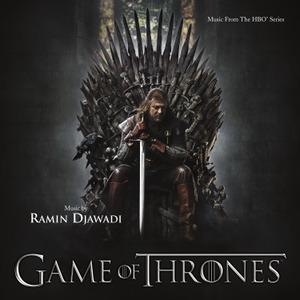
Game of Thrones (soundtrack) (Photo credit: Wikipedia)
The result does not disappoint as Taylor has easily elevated the action in the Thor franchise to a new level. Gone are the Old West parallels of Thor standing up for a small New Mexico town against a marauding intruder, replaced now by elements of science fiction with cloaked spaceships laying waste to cities. Brannagh gave us high fantasy whereas somewhat surprisingly Taylor and his team have expanded the scope of this universe to include spaceships and phasers and villains who repair themselves in healing chambers which look as if they were lifted straight out of Prometheus. These villains here are truly creepy-looking ancient creatures whose technology is oddly light years ahead of Asgard’s, as indicated by the Asgardians bringing swords to a (laser) gun fight. Even with all these new additions, Thor and his hammer still get plenty of hand-to-hand combat. The climactic battle between Thor and Malekith, in particular, is so inventive that one must marvel (no pun intended) at the logistical nightmares it presented Taylor and his small-army-sized production team.
The problem undercutting all of Taylor’s accomplishments, though, is that he and his 5 credited screenwriters (only one of whom worked on the first Thor) simply do not have nearly as interesting a story to tell as Brannagh. The key to Brannagh’s success was not in the visuals or action but in his Shakespearean tale of a king (Odin) and his two sons (Thor and Loki). Plus, he crucially set half of the film on modern day Earth where an audience surrogate character like Dr. Selvig (Skarskgard) could give voice to many cynical viewers in proclaiming, “This is all completely crazy!” By the end, when Thor sacrifices himself and thereby re-earns his right to wield his magic hammer (is there any way that didn’t sound at least a little dirty?) the audience is witnessing a man born with superhuman powers who has only at just that moment become a superhero. Moreover, when Loki pleads with Odin (“I could have done it, father. I could have done it. For you! For all of us!”) before falling into oblivion the audience has been made as sympathetic if not more so for the villain than the hero.
The story for Thor: The Dark World, on the other hand, feels reverse-engineered around cool ideas for action scenes and proposals for how best to re-integrate Jane Foster and Loki into Thor’s life. With the former it is to make her the damsel in distress and the latter it is to present them both with a common enemy. The related character arcs, Thor’s struggle to balance his love for Jane with his responsibilities as heir to the throne and Loki’s thirst for power being tempered only somewhat by his love for his adopted mother, are not as compelling. Neither is the villain Malekith, who undoubtedly looks cool but is mostly of your “doing evil because he’s a bad guy, and that’s what they do” variety.
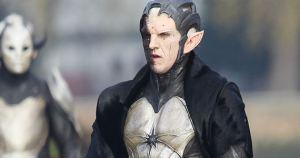
One wouldn’t be stunned if there turns out to be plenty of additional Malekith footage that was cut out to keep up the film’s brisk pace.
The exposition sequences (e.g., we need to get a to b because of c) are confusing enough that at one point one character speaks for the audience in admitting she has no idea how Dr. Selvig’s Malekith-deterring devices are supposed to work. The plot cuts corners on more than one occasion. Also, the film oddly takes itself pretty seriously on some occasions but not seriously enough on others, as the sheer amount of levity worked into the climactic battle is undeniably hilarious but might undercut the gravity of the situation a bit too much. Plus, after having looked amazing up to that point the film’s heavy use of CGI becomes incredibly noticeable in its final drama-heavy scene in which it is far too obvious our actors are speaking in front of green screens, looking as if a visual effect simply wasn’t finished prior to the film’s release.
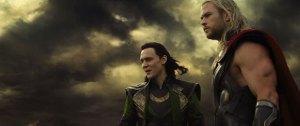
Hiddleston and Hemsworth are still so good as these characters.
As such, there is enough here to fuel the fire for this film’s naysayers. However, despite its flaws Thor: The Dark World is an immensely fun time at the movies, barreling forward with an infectious energy. Loki’s first real sequence with Thor, in particular, is insanely enjoyable, Hiddleston a perfect comedic foil to Hemsworth. It’s a shame the film takes so long to put the two together, though after The Avengers they couldn’t simply let the two buddy cop up right away. These characters and actors and their interactions are so likable that we’ll forgive them having to play in a story with rougher edges.
Hemsworth is able to convey in one held facial expression and short early scene with Sif (Jaimie Alexander) the immense sadness Thor feels from the absence of Jane. Plus, he is as charismatic a presence as ever, and is even more adept at convincingly wielding that hammer now. Hiddleston continues to be a delight as Loki, and, yes, he continues to get all the best lines. His motivations are at least clearer here than they were in The Avengers. As for the other Asgardians, the story calls for expanded roles for Thor and Loki’s parents, Odin (a wee bit too over-the-top Anthony Hopkins) and Frigga (an effective Renee Russo). This means there is less screen time to go around for the Asgardians, but they do manage to grant Heimdell (Idris Elba), Sif, and The Warriors 3 at least one notable moment. Heimdell, in particular, gets a brief but fist-pump-in-the-air action sequence.
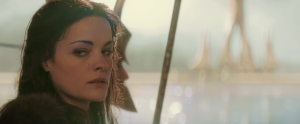
Jaimie Alexander’s performance as Sif continues to make solid arguments that if Marvel fails to utilize her more they might as well let her go over to W.B/D.C. and be the Wonder Woman she so clearly is perfect for.
It’s with the human characters where it’s a bit more of a mixed bag. The plot sidelines/incapacitates Natalie Portman more than it should have, and the enhanced role for Kat Dennings funny intern character Darcy elevates her to a far more caustic presence whose lines now seem to have been lifted straight from her character on 2 Broke Girls. The film mishandles the timing of the reveal of exactly what became of Dr. Selvik (Skarsgard) after being used by Loki in The Avengers, but Skarskard’s performance is a delight, albeit far broader than some have cared for. However, an awkward hug he has with Thor in the film’s final third is arguably the toughest scene for any of the actors in the film, and he steals the show in that moment.
As is the norm for Marvel, there are two additional scenes beyond the end of the main narrative, one occurring at the mid-credits point and another at the very end. Those will be discussed in further detail in a spoiler-filled follow-up article, but the first one arguably does Thor: The Dark World a disservice whereas the final one after all the credits have aired is the perfect additional ending to the movie, going out with the perfect blend of romance and comedy.
THE NOTES
1. Comic Book 101: Malekith the Accursed & The Dark Elves
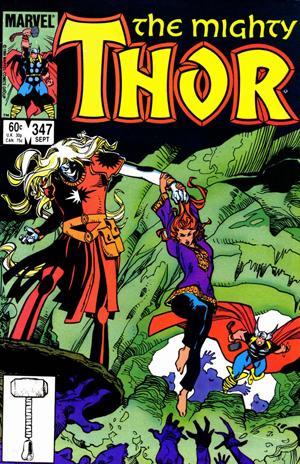
Malekith the Accursed (Photo credit: Wikipedia)
First Appearance: 1984
Background: There are actually multiple different breeds of elf in the pages of Thor. You’ve got your Bright Elves and your similar-sounding Light Elves. Then the Light Elves have two odd sub-species, the Cat Elves and Ice Elves. This movie went with the Dark Elves, a wise choice given the options. Though not gods like Asgardians, The Dark Elves have superhuman physical attributes and ability to manipulate magic to go along with their traditionally elf-like features, such as pointed ears. They live in a realm named Svartalfheim, which appropriately means “world of black-elves.” For most of their history, Malekith was their leader. His story mostly revolves around an alliance with Loki and the demon Surtur which saw him repeatedly attempt to attain an Asgardian relic (Casket of Ancient Winters) to unleash winter across the universe. Subsequently, Malekith used magic to pose as Asgard’s new king before being bsted by Kurse, and then inexplicably he returned from death only to get bitch-slapped by Hercules and Zeus at the end of his next evil scheme.
Malekith is played by Christopher Eccleston in Thor: The Dark World, which other than Malekith being the leader of the Elves uses none of the above continuity. [translation: nothing I just said spoils the plot of the film].
2. Comic Book 101: Algrim the Strong/Kurse

Thor The Dark World (Photo credit: The_JIFF)
First Appearance: 1984
Background: The mightiest of the Dark Elf warriors, Algrim is used/betrayed by Malekith to bait Thor into unknowingly battle atop a trap door which once released would drop the pair into lava. Thor just flies away, but Algrim nearly dies in the lava, suffering from amnesia as a result of the shock. The cosmic entity The Beyonder transforms Algrim into Kurse, whose power is double that of Thor’s. As Kurse, he seeks out battle with Thor on multiple occasions before finally regaining his memories, at which point realizes Malekith to be his true enemy. After murdering Malekith, Kurse is granted citizenship in Asgard, serving as the protector of all children in the realm. Malekith, Algrim/Kurse, and the Dark Elves were all originally created by Walter Simonson.
Algrim/Kurse is played by Adewale Akinnuoye-Agbaje in Thor: The Dark World, which uses next to none of the above comic book continuity.
3. There’s a New Fandral – Did You Notice?
Kudos to Chuck star Zachary Levi for stepping in and replacing Josh Dollas as Fandral, he of the Warrios 3, here in the sequel. However, it’s actually a bit surprising how little you notice the change, with Levi mostly unrecognizable with his newly blonde (most likely a wig) features for the role. Plus, while a fun character Fandral is still a minor element of the story.
THE TRAILER
What did you think? Like it? Hate it? Let us know in the comments section.
Second Opinions
- ‘Thor: The Dark World’: Explaining the ending (and what happens after the ending) – SPOILERS (popwatch.ew.com)
- Manolith Movies: Thor: The Dark World (manolith.com)
- Loki: Exploring The Development of A Sympathetic Villain (modernminutia.wordpress.com)
- Thor: The Dark World ☆☆☆☆ (friendlyfilmfan.wordpress.com)
- ‘Thor: The Dark World’ Review (screenrant.com)
- Thor: The Dark World (2013) – Film Review (jpatreviews.wordpress.com)

